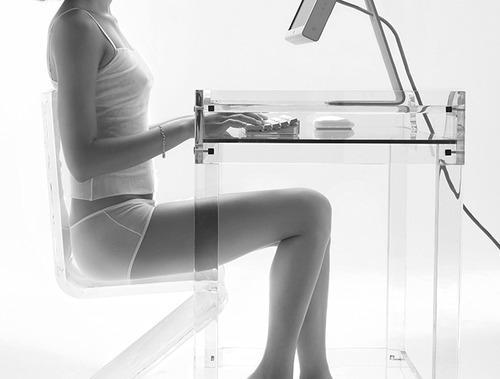With computers and laptops, tablets and cellphones, more and more of us are spending far more time sitting than we used to, so how does one do that without developing a couch potato body? Read on, special thanks to: Wendy Schmid, Q by Equinox
The Art of Active Sitting

Photography by Kenneth Willardt/ TrunkArchive.com
Spending eight-plus hours at your desk doesn’t have to ruin your body. Add these five daily movements to your routine.
By Wendy Schmid, Q by Equinox
You’ve heard the news by now: Sitting is the new smoking. It’s been linked to an increased risk of diabetes, cardiovascular disease, and early death. Not to mention possible potato-like proportions. But with most of us logging hours at desk jobs (and recovering from hard workoutswith Netflix binges), can it really be that bad?
Yes, indeed, says Vladimir Friedman, DC, CCSP, of Accelicare Sports Chiropractic in Manhattan. “When you’re in an improper slouched or seated posture for extended periods of time, there is physiological change in the body,” he says. “In addition to the proven disease risks, things start to lock up. Tissues can weaken and the effects can be degenerative.” (In fact, Friedman often shows clients how to apply kinesio tape in a crisscross pattern at the low back to teach them how to stay in proper alignment when sitting.)
Friedman likens the idea to time spent in a cast: Whenmuscle tissue is continually immobile, it shortens and shrinks over time and weakens. But give your body a load using your own body weight—from standing to squatting to taking a walk—and the measure of stress provided helps strengthen it.
“Movement brings hydration and nutrients to the tissue and activity keeps it healthy, so even though our jobs and evolving ‘mobile’ technologies are making us more prone to sit and press buttons, we need to think actively and sit actively,” he says.
Related: Is a Six-Pack Good for Your Body?
In other words, don’t just get up for breaks, but rather do things that will keep your tissues mobile and fluid throughout your day—and life. Here, Friedman’s sit-active guideline:
1. Roll your feet
Feet can really stiffen up when you sit for long periods and a lack of mobility in the ankles and calves can become a problem. Take a couple breaks during your day and roll each foot on massage ball or small frozen water bottle. Shoe off, press down on the ball or bottle and roll it back and forth over the arch of your foot allowing the pressure to loosen up the tissues and increase circulation.
2. Do some wall squats
Sit with your shoulder blades and lower back against a wall, hips and knees at a 90-degree angle. Hold for a minute and do 3 reps. No need to to overdo it with reps; these squats are not about fitness gains, but prevention of degeneration.
Related: Can Too Much Cardio Hurt Your Heart?
3. Stretch into a lunge
Constant sitting shortens the hip flexors, so you need to stretch the anterior capsule and surrounding musculature of the hips as well as the quads. Step your left leg forward into a 90-degree lunge, allowing the right knee to hover over the ground behind you. Then switch legs. Try to work this in 3-4 times a day.
4. Reverse your rotation
During prolonged sitting, we tend to collapse inward, rounding our shoulders and jutting our necks out and forward. To reverse this, move to the edge of your chair and sit on your tailbone. Leaving your arms at your sides, open your chest and rotate your hands out, letting your shoulders move back. At the same time, widen your hips by rotating your feet out. Hold for 10 seconds and repeat 10 times.
5. Extend your back
This exercise was created for disc herniation injuries but it’s perfect for reversing a sitting posture. Stand and place the palms of your hands on the sacroiliac joints at your lower back to lock out your lumbar spine and prevent overextension. Then gently lean back as far as you comfortably can. Do 10 reps, once or twice a day.